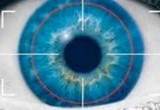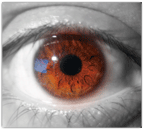Test shows iris interoperability
05 February, 2010
category: Biometrics, Corporate
By Zack Martin, Editor, AVISIAN Publications
The Biometric Consortium Conference is a good place to catch up on the latest developments and get some hands on experience with the latest technology.
Iris biometrics has always fascinated me. At my first Biometric Consortium Conference in 2002 I tested an iris camera that required me to be within an inch or so to get it to work properly. The technology has since come a long way and you can now authenticate from many feet away.
The lack of standards plagued the iris industry. Iridian, now owned by L-1 Identity Solutions, owned the patent on the biometric templates. But the patent has expired enabling others to enter the market.
At the conference this year I tested an interoperable solution with three different iris vendors. Unisys coordinated the test to show that iris solutions from multiple vendors could be used for one implementation. The U.S. Department of Homeland Security’s US VISIT program contracted Unisys for the project.
The demonstration incorporated iris detection and identification solutions from three vendors: LG Iris, AOptix, and Global Rainmakers Inc. At the conference the system was setup over a traditional WiFi network so the different vendors and booths could communicate.
I enrolled at the Unisys booth using the LG Iris IrisAccess iCAM4000. It was simple enough. I took my glasses off and was about a foot or so away from the camera where it enrolled both my irises and took a not-so-flattering photo.
From there I went to Global Rainmakers Inc. to be verified by its HBOX. This one was easy, yet confusing at the same time. You walked through an entry way and there was a video monitor but at first I wasn’t sure where to look, how fast to walk or whether I’d been verified. After I was shown where the camera was, however, it was simple to use.
Next it was on to the LG booth to be verified by the LG Iris iCAM H100 handheld prototype. This was a small device, the size of a large PDA, that verified me from about a foot or so away.
The last stop was AOptix for verification on its InSight sensor. This demonstrated iris identification from a distance of more than six feet. I walked up to the camera, stood in a box and waited for it to give me a green light before proceeding on. The verification took a couple of seconds and successfully identified me from my original enrolled iris biometric template.
Iris has a lot of potential because it’s capable of recognizing individuals from a distance, nullifying a lot of the hygienic concerns that people have with fingerprints. It also has the potential, whether you like it or not, to be used for non-intrusive or surreptitious identification. Demonstrating that the technology can work with multiple vendors could be a boon for the market.
For me, I was just happy to not have to stick my eyes in the reader like I did back in ‘02. You can see a video of the demonstration abpve along with my interview with Bryan Ichikawa, vice president of the Identity Solutions Group at Unisys, about the test.




